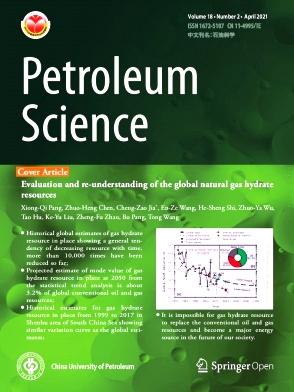New progresses of fine-grained sediment gravity-flow deposits and their importance for unconventional shale oil and gas plays
IF 6
1区 工程技术
Q2 ENERGY & FUELS
引用次数: 0
Abstract
Fine-grained sediments are widely distributed and constitute the most abundant component in sedimentary systems, thus the research on their genesis and distribution is of great significance. In recent years, fine-grained sediment gravity-flows (FGSGF) have been recognized as an important transportation and depositional mechanism for accumulating thick successions of fine-grained sediments. Through a comprehensive review and synthesis of global research on FGSGF deposition, the characteristics, depositional mechanisms, and distribution patterns of fine-grained sediment gravity-flow deposits (FGSGFD) are discussed, and future research prospects are clarified. In addition to the traditionally recognized low-density turbidity current and muddy debris flow, wave-enhanced gravity flow, low-density muddy hyperpycnal flow, and hypopycnal plumes can all form widely distributed FGSGFD. At the same time, the evolution of FGSGF during transportation can result in transitional and hybrid gravity-flow deposits. The combination of multiple triggering mechanisms promotes the widespread development of FGSGFD, without temporal and spatial limitations. Different types and concentrations of clay minerals, organic matters, and organo-clay complexes are the keys to controlling the flow transformation of FGSGF from low-concentration turbidity currents to high-concentration muddy debris flows. Further study is needed on the interaction mechanism of FGSGF caused by different initiations, the evolution of FGSGF with the effect of organic-inorganic synergy, and the controlling factors of the distribution patterns of FGSGFD. The study of FGSGFD can shed some new light on the formation of widely developed thin-bedded siltstones within shales. At the same time, these insights may broaden the exploration scope of shale oil and gas, which have important geological significances for unconventional shale oil and gas.
求助全文
约1分钟内获得全文
求助全文
来源期刊

Petroleum Science
地学-地球化学与地球物理
CiteScore
7.70
自引率
16.10%
发文量
311
审稿时长
63 days
期刊介绍:
Petroleum Science is the only English journal in China on petroleum science and technology that is intended for professionals engaged in petroleum science research and technical applications all over the world, as well as the managerial personnel of oil companies. It covers petroleum geology, petroleum geophysics, petroleum engineering, petrochemistry & chemical engineering, petroleum mechanics, and economic management. It aims to introduce the latest results in oil industry research in China, promote cooperation in petroleum science research between China and the rest of the world, and build a bridge for scientific communication between China and the world.
 求助内容:
求助内容: 应助结果提醒方式:
应助结果提醒方式:


